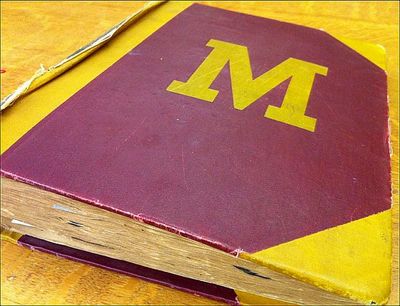In 1909, when the University Hospitals first opened their doors in an old fraternity house, patients were offered care for free. In the Report of the Medical School to the President of 1912-1913, Dr. Richard Olding Beard expressed concern pertaining to the growth of both the inpatient and outpatient services. The hospital had a waiting list that ranged between 20 and 30, while the clinic was congested. Dr. Beard stated that it was not possible to treat all of the patients who presented at the clinic or hospital. In the 1913-1914 Report of the Medical School to the President, the Outpatient Department cited 13,575 new patients and 47,347 visits, averaging around 155 visits per day.
patients were offered care for free. In the Report of the Medical School to the President of 1912-1913, Dr. Richard Olding Beard expressed concern pertaining to the growth of both the inpatient and outpatient services. The hospital had a waiting list that ranged between 20 and 30, while the clinic was congested. Dr. Beard stated that it was not possible to treat all of the patients who presented at the clinic or hospital. In the 1913-1914 Report of the Medical School to the President, the Outpatient Department cited 13,575 new patients and 47,347 visits, averaging around 155 visits per day.
 This congestion led to a $0.10 per patient per ambulatory visit charge to be instated beginning July 1, 1915. There was also a prescription fee for patients requiring prescriptions. The inpatient wards were not far behind in leaving the “free for service” model, with approval from the Board of Regents coming in the 1918-1919 school year for 50 beds in Elliot Memorial Hospital to be used by patients who would pay a per diem charge.
This congestion led to a $0.10 per patient per ambulatory visit charge to be instated beginning July 1, 1915. There was also a prescription fee for patients requiring prescriptions. The inpatient wards were not far behind in leaving the “free for service” model, with approval from the Board of Regents coming in the 1918-1919 school year for 50 beds in Elliot Memorial Hospital to be used by patients who would pay a per diem charge.
In 1921, the County-State plan for caring for indigent patients who were residents of Minnesota was passed into law, requiring that patients be referred by their family physicians and be certified for care by the Judge of Probate of the county of residence prior to visiting the clinic. In 1923, this was amended to designate the county commissioner as the official authorized to certify eligibility for care, which meant that the University Hospitals could now bill the county for half of the patient’s bill. The balance was billable to the state because of state appropriations.
Whether the cost was free, $0.10 per patient per visit, or a small per diem, visiting the University Hospitals was a pretty good deal.
Primary source of information was Masters of Medicine by J. Arthur Myers.








 One recent example that I came across was information about Ray M. Amberg, who administered the University Hospitals from the 1930s until his retirement in 1964. The Archives does have a
One recent example that I came across was information about Ray M. Amberg, who administered the University Hospitals from the 1930s until his retirement in 1964. The Archives does have a 









